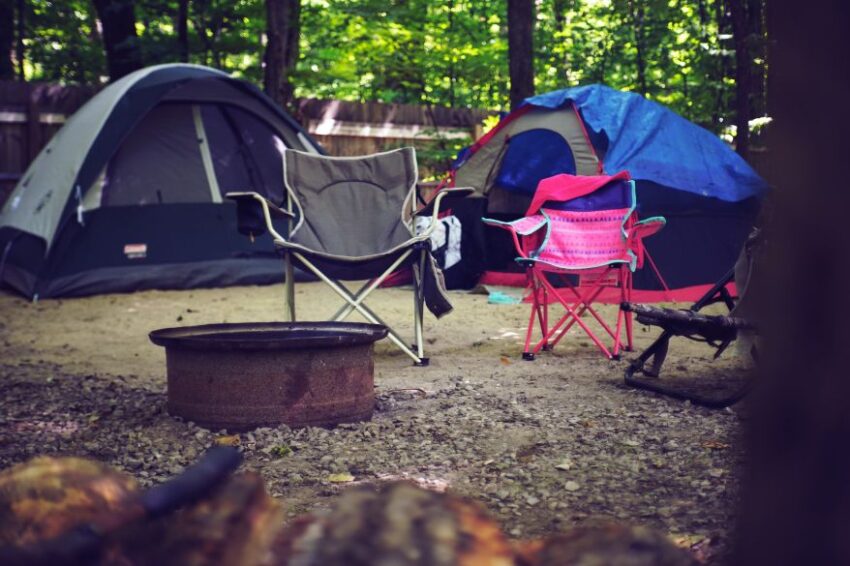Being surrounded by flies, mosquitoes, and no-see-ums while trying to enjoy your camping trip is the worst. It pays to have the best tent with a screen room when going camping in the spring and summer. You and your kids can enjoy the outdoors in screen rooms without worrying about bugs or other pests. This article will examine the top 7 tents with screen rooms for you. Select the one you prefer as you continue reading.
Best Tents With Screen Room
Best Overall: Coleman Evergreen 6-Person Cabin Tent With Weatherproof Screen Room
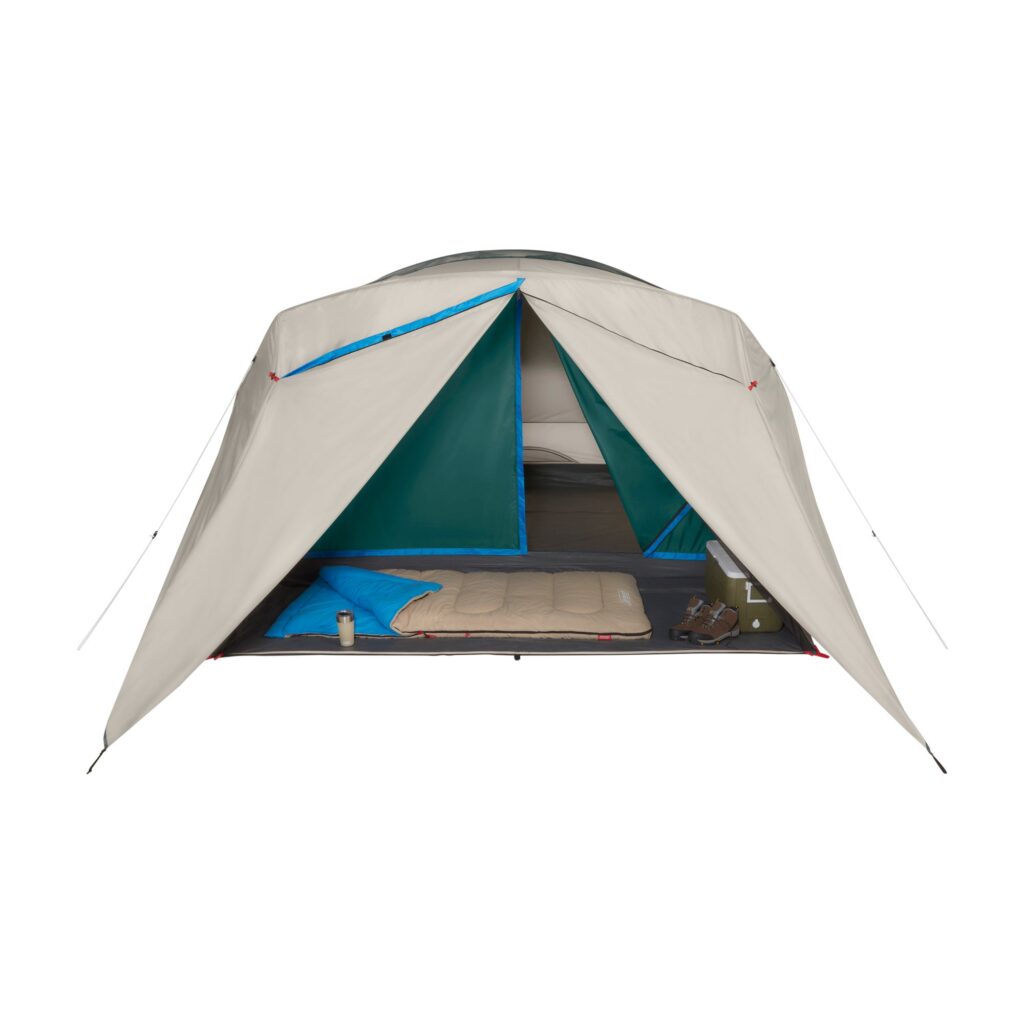
Pros
- A waterproof rainfly covers the tent and the screen room
- Four and six-person models are available
- Extra-high ceiling so most campers can stand up
- Straight walls provide more interior space
- Setup within 10 minutes
- Fits two queen-sized air mattresses
- One-year limited warranty
Cons
- In rare cases, holes can appear at the seams
- Fiberglass poles are not as durable as metal poles
The primary problem with screen rooms is usually how easily rain can enter them. The screen room can easily become wet in many of these tents because the rainfly frequently does not extend past the opening.
Unfortunately, that water has a way of entering the main space. Fortunately, this Coleman tent has an extra-large rainfly, so you won’t have to worry about this issue. To completely enclose the screen room, you can also seal the fly.
Best For Bigger Groups: Gazelle T4 Plus 4-8 Person Pop-Up Tent With Screened Porch
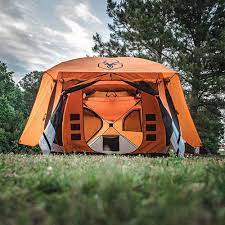
Pros
- Massive interior with 110 square feet of space
- Substantial height so people can stand up inside
- Tight-weave mesh is tear-resistant
- Detachable floors for easier setup if necessary
- Pops up in as little as 90 seconds
Cons
- Much pricier than other models
- Rain can get in through the mesh opening
For a camping trip or outdoor gathering, the T4 plus pop-up tent is ideal. It all sets up in a matter of minutes, and you can even take the floors out to hasten the process.
This tent’s spacious interior makes it ideal for large gatherings. People can move around freely without ducking because the tent is tall and wide in addition to providing 110 square feet of floor space. Although the tent is somewhat too small to host a cocktail party inside, it is more adaptable than other models on this list.
Best Budget Pick: Coleman Carlsbad Tent With Screened Porch (4/6 Person Dome)
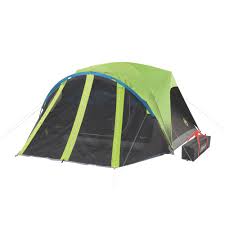
Pros
- Weatherproof rainfly
- Darkroom technology blocks 90 percent of sunlight
- Sets up in 15 minutes or less
- Durable, windproof frame
- Fits one queen-sized air mattress
- One-year limited warranty
Cons
- Rainfly does not extend over the screen room
- The sides are a bit loose, so they can billow in the wind and make noise at night
There are two factors to think about when preparing for a summer camping trip. The first thing you need is a screened tent that won’t bake you to death during the hottest part of the day. Thankfully, the screen room gives you access to lots of airflows whenever you need it.
Sleeping outside in the sun is the second issue to be concerned about. The Coleman Dome Tent has patented Dark Room technology that blocks up to 90% of sunlight to address this problem.
Best For SUV: Napier Sportz SUV Tent
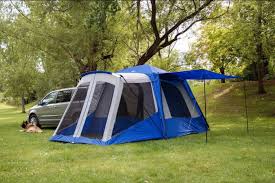
Pros
- Attaches to your car for extra living space/storage
- A headroom of more than seven feet isn’t bad!
- For the most outdoor living space, use the screen room and awning.
Cons
- Getting the vehicle connection water-tight takes some skill
- Campsite selection is limited by tent design
- The floorless screen room design isn’t a sleeping area
Despite being marketed as an “SUV tent,” people use the Napier Sportz SUV screen room tent with mini-vans, Jeeps, crossovers, and even full-sized trucks with camper shells.
Simply open the hatch, fasten the waterproof “breezeway” connecting the tent and the car, and you have a spare room for the kids to sleep in, a closet for clothing and equipment, or a safe haven to hide in when bears approach.
Best Waterproof: Coleman Screened Porch Cabin
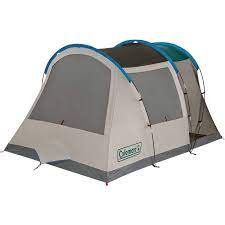
Pros
- Extended vestibule punches above its price point
- Roomy main sleeping quarters with high ceilings
- Affordable
Cons
- The porch isn’t a great place to sleep
- Fiberglass pole construction throughout
For several reasons, we like this: Firstly, there is only one zipper that could potentially let rain in, and it is completely covered by a waterproof storm flap. Second, there really aren’t any circumstances in which the “zippered window” approach is more practical than a dependable full coverage rainfly.
Additionally, the vestibule extends a few feet past the screen room. This provides you with an additional covered area to store any extra equipment you don’t want to clutter up the interior of the tent.
Best For Ventilation: Wenzel Klondike 8-Person Tent
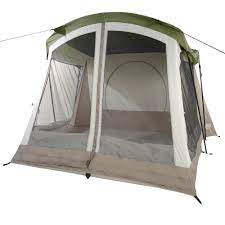
Pros
- Extra-long 60-square foot screen room
- Removable rainfly
- Excellent airflow and ventilation
- Mesh windows zipper shut to repel water
- Bottom vents for maximum airflow
Cons
- Rain can get in through the screen room
- Doesn’t hold up well in windy conditions
You might place more importance on interior space than other features when evaluating the best tent versus a screen room. After all, if you can’t actually enjoy having a second screen room, what good is it?
The Wenzel Klondike Tent, fortunately, has one of the largest screen rooms we’ve ever seen, measuring a total of 60 square feet. Campers can also stand up inside due to the high roof. Feel free to set up a cot or camping chair in the space and use it however you like.
Best For Privacy: Coleman Weathermaster 6-person Tent With Screen Room
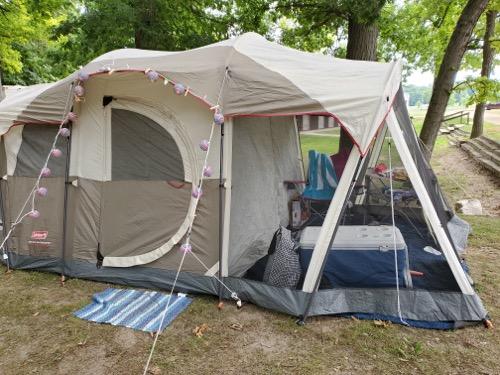
Pros
- Room divider in the main tent section
- Fits two queen-sized air mattresses
- Floorless screen room for easier setup
- WeatherTec material helps repel rain
- E-port to run extension cords outside
- Hinged main entry door
Cons
- Condensation can be a big problem with the roof mesh openings
- Tent poles are not as durable as other models
This tent has all the same great features as long as you’re fine without additional light.
A room divider in the main tent section and a hinged C door for simpler entry and exit are a few notable features. When camping with friends or family, the wall provides the greatest level of privacy, and the C door makes it simpler for kids to enter the tent because they don’t have to worry about zippers and enclosures.
Buyer’s Guide For Tents With A Screen Room
Floor Size And Center Height
The best screen tents all have the same layout: The screen room is separate from the main room, which you can imagine as your master bedroom.
The standard guidelines for floor size and center height still apply (you want as much as you can get), but pay close attention to the screen room’s actual measurements.
Shape
The majority of screen room tents have a basic dome or squared “cabin” shape with the screen room itself added off to one side. Although some, like the Nemo Wagontop, defy the norm, overall, their designs are quite similar.
Because they begin with higher and wider ceilings, cabin-style layouts typically make for better screen room tents. It goes without saying that the more of that space you can transport into your screen room, the better.
Seasonality/Weather Protection
You should be aware of the various methods used by screen room tents to protect against the elements. The most typical uses fabric-backed mesh panels for the screen room, but the main sleeping area is covered in a partial rainfly.
When it’s warm or rainy outside, these panels zip up into solid walls and zip down into windows. Despite being practical, as you’ll see below, this design isn’t our favorite.
Durability/Materials
Screen room tents are identical to any other three-season camping or backpacking tent.
The thickness of the fabric is always your first clue to high-quality materials. There isn’t a predetermined number that can be used to quantify quality, but we do advise comparing the fabrics of each tent you are considering to those of others in its category.
Higher denier (abbreviated #D) fabrics are typically more durable than lower denier fabrics made of the same material. In other words, if everything else is equal, a 100D polyester rainfly is preferable to a 30D one.

